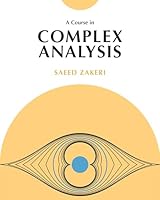
Beginning and Intermediate Algebra, 3rd Edition
- Length: 1137 pages
- Edition: 3rd
- Language: English
- Publisher: McGraw-Hil Publishing Company
- Publication Date: 2011
- ISBN-10: 0073384216
- ISBN-13: 9780073384214
- Sales Rank: #1988556 (See Top 100 Books)
Beginning and Intermediate Algebra: The Language and Symbolism of Mathematics emphasizes what great mathematicians, like Galileo Galilei, have identified for generations—- mathematics is everywhere! Authors James Hall and Brian Mercer believe active student involvement remains the key to learning algebra.
In this edition of Beginning and Intermediate Algebra: The Language and Symbolism of Mathematics, topics from both beginning algebra and intermediate algebra courses are well integrated to help students become fluent in algebra—the language and symbolism of mathematics.
Hall-Mercer Approach
Unique Emphasis on the “Rule of Four” and Multiple Perspectives
‘This is a very well written text with an integration of the verbal, symbolic, numerical, and graphical approach. The examples, illustrations, and applications in the exercises are well thought out and highly motivating.’
—Mark Sigfrids, Kalamazoo Valley Community College
The Miller O’Neill Hyde team continues to offer an enlightened approach grounded in the fundamentals of classroom experience in Beginning and Intermediate Algebra 2e. The practice of many instructors in the classroom is to present examples and have their students solve similar problems. This is realized through the Skill Practice Exercises that directly follow the examples in the textbook. Throughout the text, the authors have integrated many Study Tips and Avoiding Mistakes hints, which are reflective of the comments and instruction presented to students in the classroom. In this way, the text communicates to students the very points their instructors are likely to make during lecture, and this helps to reinforce the concepts and provide instruction that leads students to mastery and success. The authors included in this edition Problem-Recognition Exercises, that many instructors will likely identify to be similar to worksheets they have personally developed for distribution to students. The intent of the Problem-Recognition Exercises is to help students overcome what is sometimes a natural inclination toward applying problem-solving algorithms that may not always be appropriate. In addition, the exercise sets have been revised to include even more core exercises than were present in the previous edition. This permits instructors to choose from a wealth of problems, allowing ample opportunity for students to practice what they learn in lecture to hone their skills and develop the knowledge they need to make a successful transition into College Algebra. In this way, the book perfectly complements any learning platform, whether traditional lecture or distance-learning; its instruction is so reflective of what comes from lecture, that students will feel as comfortable outside of class as they do inside class with their instructor. For even more support, students have access to a wealth of supplements, including McGraw-Hill\u2019s online homework management system, MathZone.
Table of Contents
Chapter 1 The Set of Real Numbers
Chapter 2 Linear Equations and Inequalities
Chapter 3 Graphing Linear Equations in Two Variables
Chapter 4 Systems of Linear Equations
Chapter 5 Polynomials and Properties of Exponents
Chapter 6 Factoring Polynomials
Chapter 7 Rational Expressions
Chapter 8 Relations and Functions
Chapter 9 More Equations and Inequalities
Chapter 10 Radicals and Complex Numbers
Chapter 11 Quadratic Equations and Functions
Chapter 12 Exponential and Logarithmic Functions and Applications
Chapter 13 Conic Sections
Chapter 14 Binomial Expansions, Sequences, and Series







